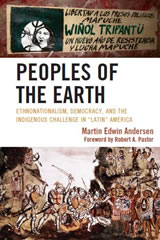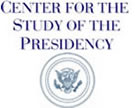The jungle frontier between Brazil and Bolivia is longer than the US-Mexico border, but the task of stemming the cocaine that drug officials say is flooding the country falls to a handful of Brazilian policemen.
In tiny border hamlets, the officers make their rounds, urging villagers to report what they've seen. In a speedboat, others patrol the Mamore river separating the two countries, guessing which of the countless motorised canoes is carrying drugs bound for Brazil's big cities.
"Here, the problem is grave, with lots of drugs crossing constantly," said Alexandre Barbosa, one of 35 federal police officers assigned to this sector in Rondonia state in far western Brazil. "You see this region, where the frontier is separated by a river. Every 100 metres, or sometimes less, you see a port. So you can move from one port to the other very fast."
The tide is not favouring Brazil, which is experiencing the latest trend in the transnational drug trade in South America. Law enforcement and health officials say demand for cocaine and its highly addictive derivative, crack, is on the rise in Brazil, just as traffickers are seeking new markets to take up the slack left by falling consumption in the United States. The challenge Brazilian policymakers face is like no other for a big consuming country: Brazil shares half of its 16,000km-long border with the world's three biggest cocaine producers, Bolivia, Colombia and Peru.
With somewhere between 1 million and 2 million cocaine users, Brazil has been the world's No 2 market for years, say drug experts. And the country offers traffickers an increasingly alluring market because of its fast-expanding middle class. "Brazil is being flooded," said Bo Mathiasen, a senior UN drug official. "If you're trafficking cocaine, and you know there's a big and growing market, that's where you want to go."
A country that once saw large-scale drug trafficking as a US problem with little impact on itself is now squarely focused on carrying out a strategy that relies heavily on reinforcing the porous frontiers it shares with 10 countries.
Since announcing a strategic border plan in 2011, President Dilma Rousseff has deployed thousands of soldiers to the border, many of them with special police powers. The government also has moved to increase the number of law enforcement officers which, until recently, numbered only one officer for every 16km of frontier, according to a federal auditor's report. A fleet of aerial drones helps monitor the most remote regions of jungle bordering Bolivia and other countries.
"We see this as a problem of security and, at times, a problem of national defence," said Regina Miki, national secretary of public security at the ministry of justice. "It's a problem of sovereignty."
Officials say the tactics are costing billions of dollars. But Brazil considers the money an important investment as the country works on its image in preparation for soccer's 2014 World Cup and the 2016 Summer Olympics.
The United States is sharing intelligence to help Brazil's interdiction efforts, said a state department official who works on drug issues, speaking on condition of anonymity because of the sensitive nature of the co-operation between the two countries.
"The Brazilians know they have a problem," the official said. "They saw what happened to us in the United States when crack took over, and they've been at the forefront of trying to get ahead of the curve."
Gil Kerlikowske, director of the White House Office of National Drug Control Policy, said the co-operation goes beyond interdiction to drug treatment, a pillar of Brazil's plan for weakening drug trafficking. Yet, in many ways, Brazil's methods have had some of the same results as the hardline war-against-drugs approach taken by the United States.
Brazil's prison population has more than doubled since 2000, and drug seizures, a yardstick favoured by American policymakers to measure success, has increased sixfold in the same time period.
The new Brazilian strategy comes as significant changes have begun to take hold in the traditional cocaine-producing and consuming countries.
In Colombia, long the top producer of cocaine and the No 1 supplier to the American and European markets, the amount of land used to grow coca, the leaf used to manufacture the drug, has fallen by more than half since 2001. And the USS government said Colombia's potential to produce cocaine has tumbled from 700 metric tons a dozen years ago to under 200 metric tons in 2011.
Colombian and American officials credit a multibillion-dollar programme of aerial fumigation, largely funded by Washington, as well as assistance and training that have helped the security forces beat back drug-trafficking rebels and traditional cocaine cartels.
In addition, the UN's 2012 World Drug Report says that cocaine use in the United States has fallen by two-thirds since 1982, with the fall particularly notable since 2006.
But coca production has picked up dramatically in recent years in Peru and Bolivia, as traffickers adjusted and home-grown cocaine smuggling outfits popped up. The amount of cocaine both countries produce has shot up, according to estimates made by Kerlikowske's anti-drug office at the White House. "Clearly, Peru and Bolivia have kind of eclipsed the problem of Colombia," Kerlikowske said.
Bolivian and Peruvian cocaine is smuggled to Europe and south to one of the biggest markets on the continent, Argentina, where per-capita consumption of cocaine has rivalled that of the United States and European countries, American, European and Brazilian officials say.
But the big prize for drug traffickers has been Brazil, with nearly 200 million people. And the majority of cocaine consumed here is Bolivian, according to Brazilian police.
That, too, is a sharp break from the past, when Bolivian cocaine made it to the streets of Washington and New York.
"Bolivia is really no longer a threat, in comparison to the 1980s, to the US," said Eduardo Gamarra, a Bolivian-born professor of Latin American affairs at Miami's Florida International University. "The cocaine market for Bolivia is in Brazil. It's in São Paulo. It's in Belo Horizonte. It's in the cities, and it's growing."
Sabino Mendoza, an adviser on coca issues to President Evo Morales's government in Bolivia, said in an interview in La Paz that Bolivia does not consider itself a trafficking country. He said the problem is Peruvian cocaine that winds its way through Bolivia en route to Brazil.
"For us and for Brazil, obviously it's a concern," he said. "And between the two countries we are resolving it."
Here on the border - in the Brazilian state of Rondonia - federal police agents give little thought to the origin of the cocaine. What they do know, they say, is that both Bolivian and Brazilian traffickers are involved.
As he steers a patrol boat with three other officers on the Mamore, Jonas Marques says traffickers work to get the drugs to the gritty Bolivian border town of Guayaramerin. "It's a city where drug trafficking dominates," he said.
The drugs are stockpiled there and in other communities and later flown into Brazil aboard small aircraft or brought across by river.
Traffickers pay $50/kg. The drugs are later shipped to the state capital, Porto Velho, for about $250/kg and finally sold for up to $6,000 in São Paulo or other big Brazilian cities. "People buy much more cocaine than they did two, three or five years back," Marques said. "So business is always growing. It's quite profitable."
• This article appeared in the Guardian Weekly, which incorporates material from the Washington Post






